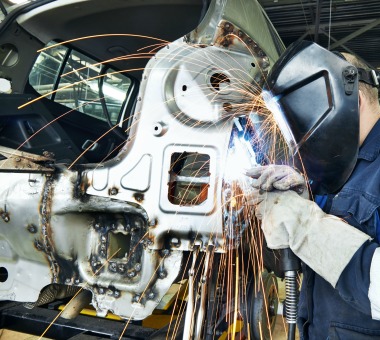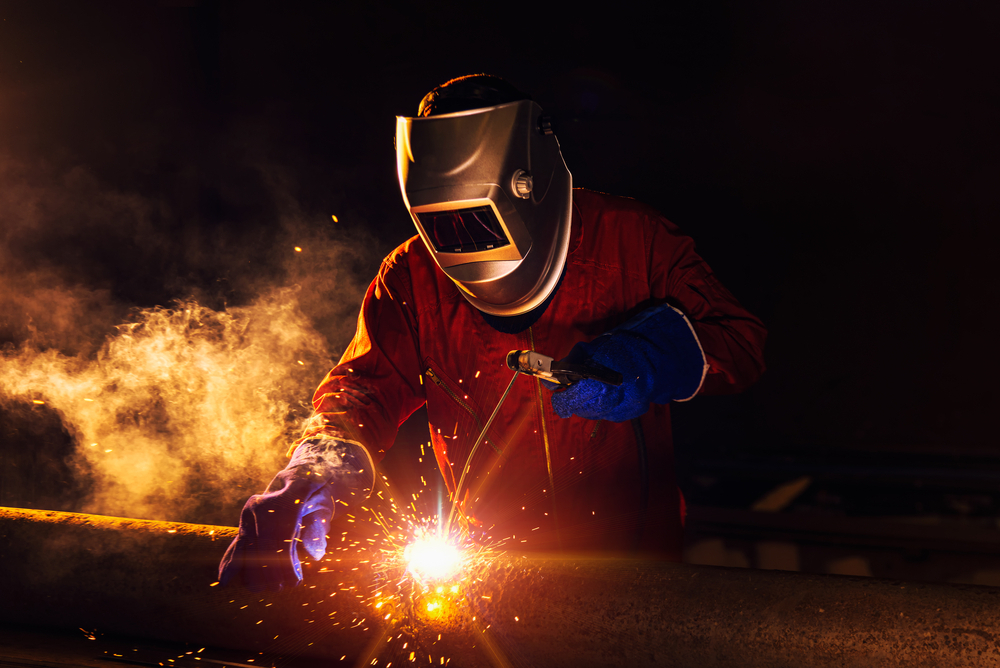Everything about Welding: Secret Insights Into Techniques and Ideal Practices for Success
Welding incorporates a range of strategies, each fit for specific materials and applications. Understanding these approaches, such as GMAW, SMAW, and TIG, is vital for attaining optimal outcomes. Furthermore, the appropriate equipment and security practices can not be overlooked. As preparation and repairing play important roles in the welding procedure, grasping these aspects can considerably enhance the top quality of the end product. What are the key elements that assure an effective weld?
Comprehending Various Welding Strategies
Welding methods include a variety of methods, each fit to particular applications and materials. Amongst one of the most usual strategies are Gas Steel Arc Welding (GMAW), Secured Steel Arc Welding (SMAW), and Tungsten Inert Gas Welding (TIG) GMAW, additionally recognized as MIG welding, is preferred for its speed and versatility, making it optimal for slim products. SMAW, or stick welding, is preferred for its simplicity and efficiency in exterior settings, especially with thicker metals. TIG welding provides precision and control, making it appropriate for intricate job and non-ferrous steels (Belgrade Welding). Each technique has its distinct advantages and considerations, enabling welders to choose the very best technique based upon the job's requirements, material kind, and wanted outcomes. Understanding these methods is necessary for effective welding
Vital Welding Tools and Tools
While various welding techniques require specific skills, the ideal tools and devices are equally vital for attaining top quality results. Vital welding equipment includes welding equipments, which vary depending upon the strategy-- such as MIG, TIG, or stick welding. Protective gear, consisting of aprons, handwear covers, and headgears, guarantees safety and security and comfort during the process. On top of that, components and clamps assist safeguard materials in location, making certain precision in welds. Consumables like welding poles, cord, and shielding gas are also important components that affect the quality of the weld. Moreover, tools such as grinders and cutters help with surface preparation and post-weld finishing, adding to a professional end result. Buying top quality equipment inevitably enhances the effectiveness and efficiency of welding jobs.
Safety Practices in Welding
Appropriate safety and security techniques are vital in the welding market to shield employees from possible dangers. Welders have to put on proper individual protective equipment (PPE), consisting of safety helmets with appropriate shading, gloves, and flame-resistant garments. Adequate ventilation is essential to minimize exposure to hazardous fumes and gases created during the welding procedure. Additionally, workers should be learnt the proper handling of welding devices to stop accidents. Fire precaution, such as maintaining flammable products away from the welding location and having fire extinguishers readily offered, are essential. Regular inspections of equipment and offices can help identify possible threats before they lead to mishaps. By sticking to these safety methods, welders can develop a safer working setting and lessen dangers connected with their trade.
Readying Products for Welding
Preparing materials for welding is an important action that considerably influences the high quality and stability of the final item (Montana Mobile Welding and Repair). Correct prep work includes cleaning the surface areas to eliminate contaminants such as oil, corrosion, and dust, which can endanger the weld. Methods such as grinding, fining sand, or utilizing solvents are generally employed to attain a tidy surface. Additionally, ensuring that the products fit together well is necessary; gaps can cause weak welds. It's likewise vital to think about the alignment and positioning of the elements, as this will impact the simplicity of welding and the last result. Selecting the appropriate filler product and making sure compatibility with the base steels is necessary for attaining solid, durable welds.
Tips for Getting High-Quality Welds
Attaining top notch welds needs focus to information and adherence to best methods throughout the welding process. Proper joint prep work is essential, making certain surface areas are cost-free and tidy from impurities. Choosing the proper filler material and welding method based on the base steels is important for optimal bonding. Maintaining regular travel speed and angle while welding can stop issues and promote harmony. Additionally, managing warm input is important; excessive warm can bring about bending and weakened joints. If required, routinely inspecting the welds during the procedure enables for prompt changes. Ultimately, using suitable post-weld treatments, such as cleaning and stress and anxiety relief, can boost the durability and honesty of the weld, inevitably making certain an effective result.
Troubleshooting Common Welding Issues
Welding often provides obstacles that can impact the quality and integrity of the final item. Usual problems such as porosity, irregular weld beads, and overheating can emerge, each calling for specific fixing methods. Comprehending these problems is important for welders to boost their abilities and achieve perfect results.
Porosity Troubles Discussed
Although porosity can often be overlooked, it continues to be an essential concern in welding that can jeopardize the integrity of a completed item. Porosity describes the visibility of little gas pockets within the weld grain, which can deteriorate the joint and lead to premature failing. This problem normally occurs from impurities, dampness, or incorrect securing gas coverage during the welding process. To alleviate porosity, welders welding aluminum to steel ought to validate that the base materials are tidy and dry, utilize ideal shielding gases, and preserve constant welding criteria. On a regular basis inspecting the equipment and setting can additionally aid recognize prospective concerns before they manifest in the weld. Addressing porosity successfully is crucial for achieving solid, resilient welds that meet quality requirements.

Inconsistent Weld Beans
Inconsistent weld beads can greatly affect the high quality and toughness of a completed product. Different elements contribute to this problem, consisting of incorrect traveling speed, inaccurate amperage settings, and inconsistent electrode angles. When the welder relocates as well swiftly, a grain might show up slim and lack infiltration, while moving as well slowly can cause excessive buildup. In addition, using the wrong amperage can result in either undercutting or too much spatter, both of which compromise weld stability. The welder's technique, such as irregular torch activity, can likewise bring about uneven bead look. To reduce these issues, welders need to concentrate on maintaining constant, controlled motions and making sure proper equipment setups to attain harmony in their welds. Consistency is vital to attaining strong and reputable welds.
Overheating and Bending Issues
Too much heat during the welding procedure can lead to significant overheating and buckling concerns, affecting the structural integrity of the workpiece. These troubles typically show up as distortion, which can jeopardize alignment and fit-up, making further setting up challenging. Factors contributing to overheating consist of the selection of welding criteria, such as voltage and take a trip speed, along with the kind of product being bonded. To reduce these issues, welders should keep constant travel speed and proper warm input while monitoring the work surface temperature. Furthermore, preheating or post-weld warmth treatment can help alleviate stresses brought on by quick air conditioning - Belgrade. Normal evaluation and adherence to ideal methods are necessary in protecting against overheating and making certain the longevity and integrity of bonded frameworks
Often Asked Concerns
What Are the Job Opportunities in the Welding Industry?
The welding industry supplies diverse job opportunities, consisting of positions as welders, engineers, examiners, and instructors. Experts can work in manufacturing, construction, aerospace, and automotive sectors, browse around these guys benefiting from solid need and competitive incomes in numerous functions.
Just How Can I Improve My Welding Rate Without Sacrificing Top Quality?
To boost welding rate without giving up quality, one ought to practice effective methods, preserve devices, enhance settings, and boost hand-eye sychronisation. Routine training and looking for responses can also substantially add to attaining quicker, high-quality welds.
What Qualifications Are Readily Available for Welders?
Countless accreditations exist for welders, consisting of those from the American Welding Society (AWS), the National Facility for Building And Construction Education And Learning and Research (NCCER), and various industry-specific organizations. These credentials enhance employability and demonstrate skill efficiency.
Exactly How Does Welding Impact the Residences of Metals?
Welding affects the residential properties of steels by altering their microstructure, which can cause changes in ductility, firmness, and strength. Heat input and cooling rates during the process considerably affect these material qualities.
Can I Bonded Dissimilar Metals With Each Other?
